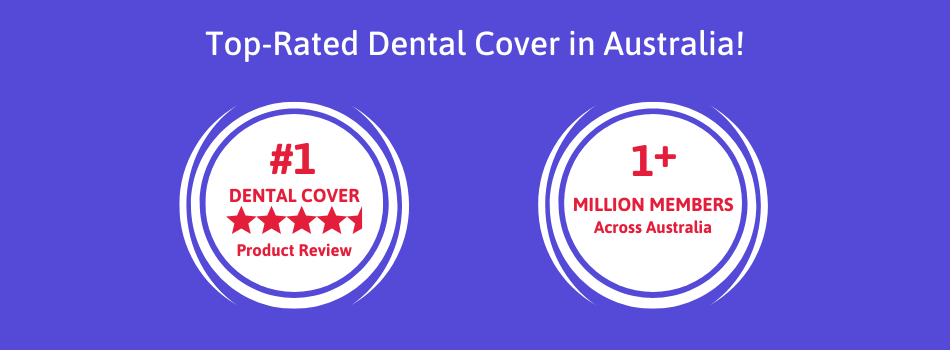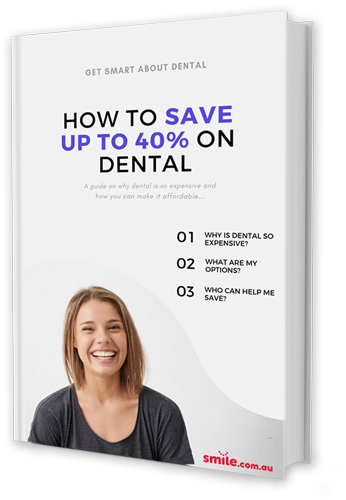All-on-4 Dental Implants Guide: Procedure, Costs, Risks & More
Reviewed June 2024 by Our Content Experts
What Are All-On-4 Dental Implants?
Unlike removable dentures, All-on-4 dental implants are a permanent solution for a healthier smile for life. “All-on-4” lets you replace your dentures straight away, without the lengthy procedure for conventional implants.
All-on-4 dental implants are a whole set of teeth that rest on 4 dental implants. The four titanium implants support a fixed dental prosthesis with 10 to 14 teeth. Once placed, your replacement teeth will look, feel, and chew similar to your natural teeth.This treatment is popular as the prosthesis is placed immediately, so patients can immediately replace missing teeth.
How Much Do All-On-4 Dental Implants Cost?
The cost of all-on-4 dental implants varies based on a number of factors including the material used and how many teeth you need replaced. In Australia, all-on-4 dental implants typically range between $23,000 to $27,000 per fixed arch. This cost includes the first consultation, any procedures before surgery, the surgery, the fitting of an acrylic denture, the post treatment reviews and x-rays. With Smile dental cover, you get reduced and capped fees on all-on-4 implants.
Select your state in the cost comparison table below for more detailed examples of the price of all-on-4 treatment in your location.
All-On-4 Dental Implants Cost Comparison - QLD
Reviewed June 2024 by Expert Georgi Mack
Select State:
Item No.
Dental service
Regular Patients Pay
Smile Capped Fee
(Often less)
Save with Smile dental cover!
'Regular Patients Pay' is based on the Australian Dental Association (ADA) and Health Industry Claims and Payments Service (HICAPS).
'Smile Capped Fee' means members will not pay more than this fee & will often pay less so savings are often more!
These examples are guides, your treatment may vary.

Top-rated dental cover in Australia!


How Can I Get All-On-4 Dental Implants?
There are three stages for all-on-4 treatment:
- Surgically placing the implants
- Placement of initial teeth
- Placement of final teeth after healing period
So, why do you need initial teeth? There are three reasons why you can’t have your final teeth placed immediately:
- Your gums continue changing up to 12 months after the placement of the initial teeth so you will need to reline your new false teeth. After your initial teeth are fitted, it will take some to become accommodated to the new way you speak and eat. Your bite will change after the initial teeth are fitted and you will need to reassess the fit and function of the bridge. Any changes that are required can be incorporated into the fit of the final teeth.
- After the implants are placed, your jawbone adheres itself to the implants through a process called osseointegration. An acrylic bridge is more forgiving on the bite and can absorb some of the impact of the bite, which supports osseointegration. Due to its high rigidity, a Zirconia bridge absorbs less of the force of the bite and could hinder the healing process.
- The production for your final prosthesis can take a number of weeks and you would be left without teeth whilst you waited.
The standard option for all-on-4 treatment involves fitting an initial acrylic fixed bridge. As a guideline, this fixed bridge lasts between three to five years before needing replacement. Many patients choose to replace the initial fixed bridge with a long-term restorative solution made of zirconia or porcelain.
Where Can I Get All-On-4 Dental Implants?
All-on-4 dental implants are a lifelong investment so it’s important to visit an excellent dentist that provides an exceptional standard of care and a reliable dental solution for your dental treatment. Poorly placed implants can lead to further costly dentist treatments. By visiting a Smile dentist, you are assured quality care and get reduced and capped fees on dental implants. With 4,000+ Smile dentists across Australia, there’s sure to be one near you.
Find a Smile dentist near you!Frequently Asked Questions
What Are The Benefits Of All-On-4?
Implant dentistry is an excellent dental solution for missing teeth. The benefits of all-on-4 implants include:
- Shorter installation time than other dental implants
- Treatment all done in one day
- Less invasive procedure
- Prevents future bone loss
- Full arch restoration
- Improved oral health
- Strong natural bite
- Enhanced confidence
Who Is A Good Candidate For All-On-4?
Patients with badly decayed teeth, broken down teeth, or teeth severely impacted from gum disease are often good candidates for all-on-4 treatment. All-on-4 can be performed on patients who would normally be ineligible for dental implants due to diabetes, osteoporosis, or other health conditions. Patients who lack the bone density to support a large number of dental implants may be ideal candidates for all-on-4. Unlike dental implants, patients do not need to undergo expensive and time-consuming bone grafting surgery before all-on-4 treatment.
If you have many remaining teeth, or only need an implant for a single tooth, this may not be the best treatment for you. There are many alternatives available to replace natural teeth, including a dental bridge, partial denture, or single dental implant.
What Are The Differences Between All-On-4 And Dental Implants?
Both all-on-4 and traditional dental implants involve surgically placing implants into your jaw bone. These implants are used to support fixed or removable ball-retained dentures.
The biggest difference between all-on-4 and dental implants is the number of implants that are installed. Replacing an entire set of teeth with dental implants might involve jaw bone grafting and many months of healing before your mouth would be ready for the crowns or dentures. However, with all-on-4, the healing time is much faster as there are fewer implants and you can have temporary dentures installed until your permanent dentures are ready.
Compared to dental implants, all-on-4 treatment involve reduced costs, reduced patient involvement, and a reduced number of dental visits.
What Are The Differences Between All-On-4 And Removable Dentures?
The all-on-4 technique provides patients with non-removable teeth so patients do not need to remove their prosthesis after eating or before bed. Instead, patients can care for their all-on-4 prosthesis similar to how they would take care of their natural teeth. No matter if you choose a fixed bridge or denture, it is important to follow your Smile dentists’ instructions on how to properly clean your dentures or your all-on-4 fixed bridge.
Unlike removable dentures, with all-on-4, you also don’t have to worry about denture adhesive. The fixed bridge of the all-on-4 is stable and won’t move around since it is attached to the implant. Removable dentures often suction to the roof of your mouth with some additional support from existing teeth. All-on-4 dental implants avoid the possible wobbling, slipping, or instability of removable dentures.
Patients are often advised to avoid certain foods that are difficult to chew or bite if they have removable dentures. Patients do not need to avoid those foods if they have all-on-4 dental implants.
Removable dentures need to be refitted every few years, but all-on-4 dental implants can last decades without needing restoring or replacing.
The fixed bridge of all-on-4 dental implants also does not cover the palate, unlike removable dentures. This results in multiple benefits, including:
- Less irritation in the gums and tissue
- No gag reflex issues
- No negatively altered sense of taste or temperature
What Are The Risks With All-On-4?
All-on-4 dental implants have a very high success rate. This is no surprise as the success rate for dental implants is roughly 95% and almost 100% for bridges. Like with any procedure, however, there are potential risks and complications with all-on-4 treatment, including:
- Surgical complications such as infection, poor healing, extensive bleeding or discomfort
- While rare, dental implants can fail
- Dental implants not integrating due to factors such as smoking, poor bone density, nutrition, or pre-existing health conditions
Several factors can affect the success of all-on-4 dental implants, including:
- Poor oral hygiene after treatment
- Plaque build-up, which can lead to periodontal disease, bone loss, and ultimately, implant failure
- Smoking, which prevents proper healing
- Teeth grinding, which mainly impacts the longevity of the fixed-bridge
Are The Risks Associated With All-On-4 Preventable?
The risks associated with all-on-4 treatment are preventable. For example, dental implants can fail due to peri-implantitis, which is a form of gum disease that impacts the implant. However, peri-implantitis can be prevented with proper care, including brushing, flossing, and regular dental check-ups with your Smile dentist. Some patients may have a higher risk of contracting peri-implantitis, for example those with partial edentia, a smoking habit, poor plaque control or pre-existing chronic periodontitis. By discussing your medical history with your nearby Smile dentist, you can determine whether this procedure is right for you.
Does All-On-4 Hurt?
As with any procedure, there will be some discomfort during the healing process after all-on-4 treatment. During the procedure, patients often receive general anaesthetic (where you are completely asleep) or IV sedation (where you are in a twilight state. This ensures that the treatment is as pain-free as possible. All-on-4 treatment is minimally invasive and involves no bone grafting, so the recovery period is shorter than for traditional implants.
How Long Does All-On-4 Last?
All-on-4 dental implants can last decades. The longevity of your all-on-4 treatment can vary depending on your age, the quality of your implants, your health, and whether you floss and brush your teeth properly.

Join Now & Save Instantly!
For the top-rated dental cover in Australia, join Smile from just $79 a year and choose a Smile dentist. Join online in 2 minutes by clicking Join Now & Benefit Instantly.
Back to Top


